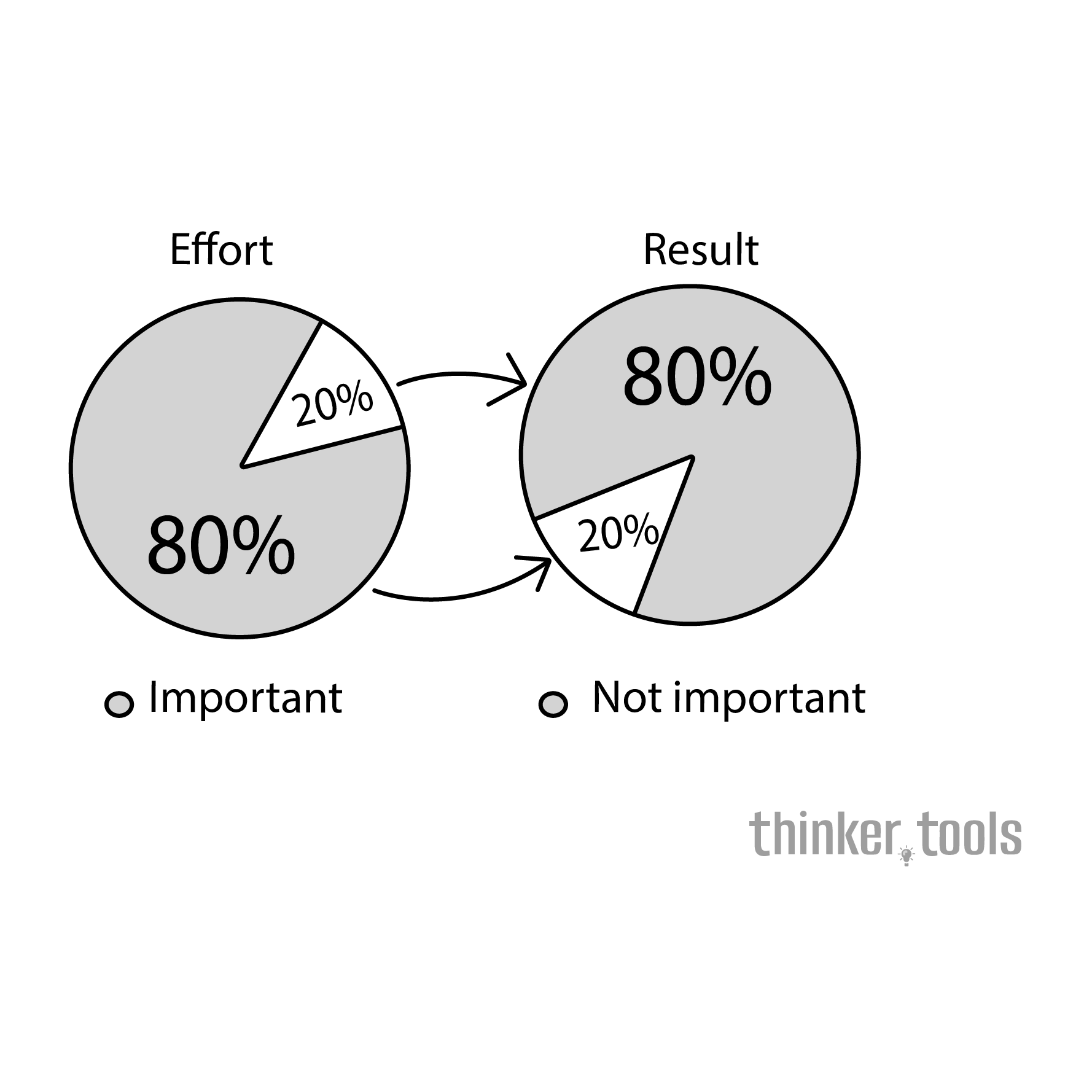
What is the Pareto Principle?
The Pareto Principle states that roughly 80% of effects come from 20% of causes. In practical terms, this means that 80% of your results typically come from 20% of your efforts, 80% of your sales from 20% of your customers, or 80% of your happiness from 20% of your activities. While the exact ratio varies, the core insight remains: a minority of inputs produces the majority of outputs.
The Historical Discovery
In 1896, Italian economist Vilfredo Pareto noticed that 80% of Italy's land was owned by 20% of the population. Investigating further, he found this pattern repeated across countries and time periods. In the 1940s, quality management pioneer Joseph Juran stumbled upon Pareto's work and realized this principle applied far beyond economics—it was a universal pattern affecting business, personal productivity, and virtually every aspect of life. Juran named it the "Pareto Principle" and sparked a revolution in how we think about efficiency and focus.
How to Apply the Pareto Principle Step by Step
1. Identify Your Domain
Choose an area to analyze:
- Business: Sales, customers, products
- Personal: Time use, relationships, habits
- Work: Tasks, projects, skills
- Health: Exercises, foods, habits
2. Collect and List Data
Gather comprehensive data about inputs and outputs:
- List all activities, customers, products, or efforts
- Measure their corresponding results or impact
- Be specific with metrics (revenue, time, satisfaction)
3. Calculate Percentages
- Rank items from highest to lowest impact
- Calculate cumulative percentages
- Identify where roughly 80% of results originate
4. Identify the Vital Few
Look for the pattern:
- Which 20% of activities produce 80% of results?
- Which 20% of customers generate 80% of revenue?
- Which 20% of efforts create 80% of impact?
5. Analyze the Trivial Many
Examine the remaining 80%:
- What can be eliminated?
- What can be delegated?
- What can be minimized?
6. Reallocate Resources
Shift focus to amplify the vital few:
- Double down on high-impact activities
- Systematize or eliminate low-impact tasks
- Protect time for your 20%
7. Monitor and Adjust
The 80/20 split evolves over time:
- Regularly reassess your vital few
- Watch for shifting patterns
- Adjust strategy accordingly
Practical Examples
Sales Optimization: A software company discovers:
- 22% of features drive 78% of user engagement
- 18% of customers generate 82% of revenue
- 25% of support tickets consume 75% of support time
Action: They focus development on core features, create VIP customer programs, and build self-service resources for common issues.
Personal Productivity: Maria analyzes her work week:
- 3 of 15 weekly tasks (20%) produce 80% of her performance review value
- 2 of 10 daily activities generate most of her energy and satisfaction
- 4 of 20 professional relationships drive most opportunities
Action: She blocks prime time for high-value tasks, delegates routine work, and invests more in key relationships.
Learning Acceleration: A language learner finds:
- 300 words (20% of basic vocabulary) appear in 80% of conversations
- 4 grammar patterns cover 80% of everyday communication
- 20% of practice methods yield 80% of fluency gains
Action: Focus intensively on high-frequency words and patterns before expanding.
Advanced Applications
Recursive 80/20: Apply the principle to the top 20% to find the vital 4% (20% of 20%) that drives 64% of results.
Reverse 80/20: Identify the 20% causing 80% of problems to eliminate disproportionate negative impact.
80/20 Time Audit: Track time for a week, then identify which 20% of time blocks produce 80% of meaningful outcomes.
Benefits and Life Impact
Mastering the Pareto Principle transforms how you approach everything:
- Amplifies effectiveness by focusing energy where it matters most
- Reduces overwhelm by revealing what can be safely ignored
- Accelerates success through concentrated effort on high-leverage activities
- Improves decision-making by highlighting disproportionate impact
- Creates freedom by eliminating or delegating the trivial many
- Increases satisfaction by spending more time on what truly matters
The Pareto Principle isn't about working less—it's about working smart. It challenges the assumption that all efforts are equal and reveals the profound inequality of impact. By identifying and focusing on your vital few, you can achieve more while doing less, create greater value with focused effort, and design a life centered on what truly moves the needle. In a world that glorifies busyness, the 80/20 rule offers a radical alternative: the disciplined pursuit of less but better.